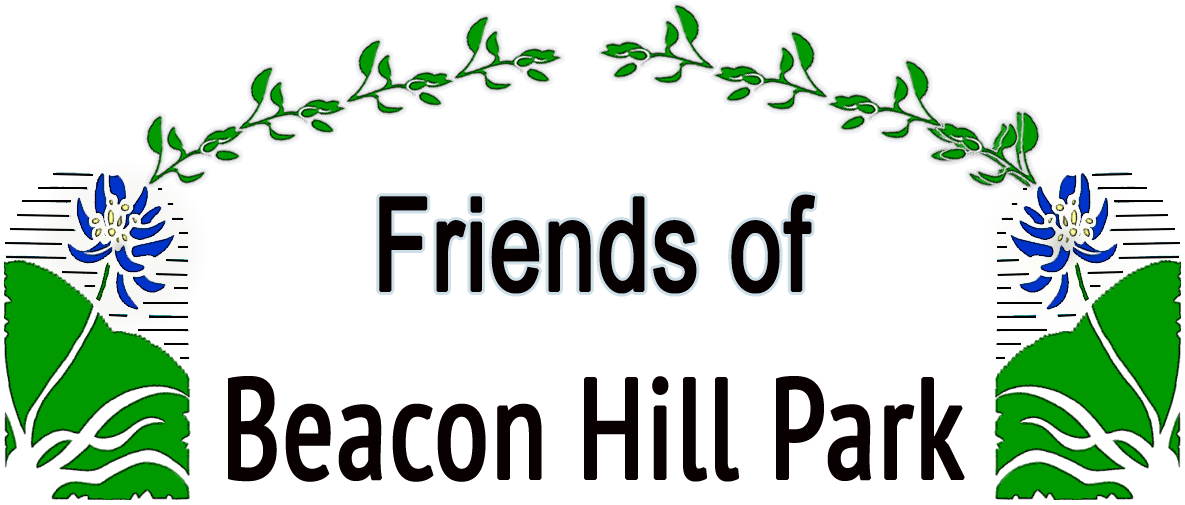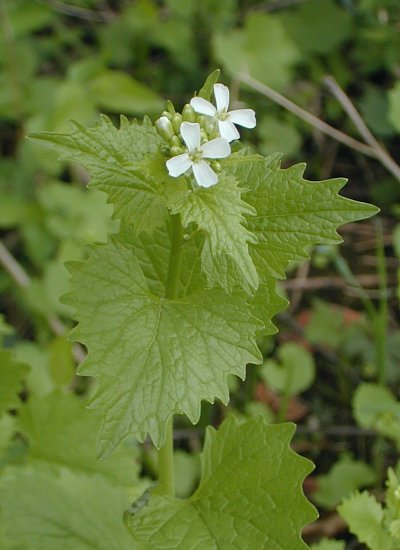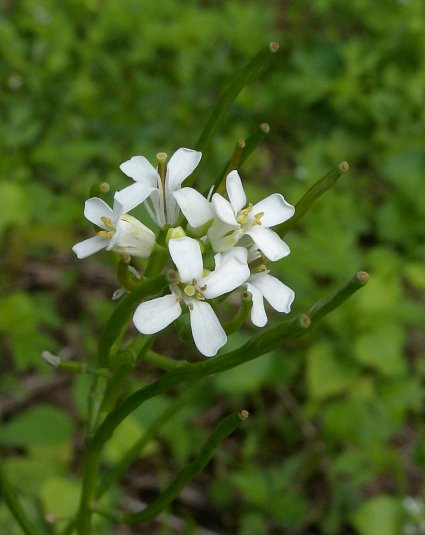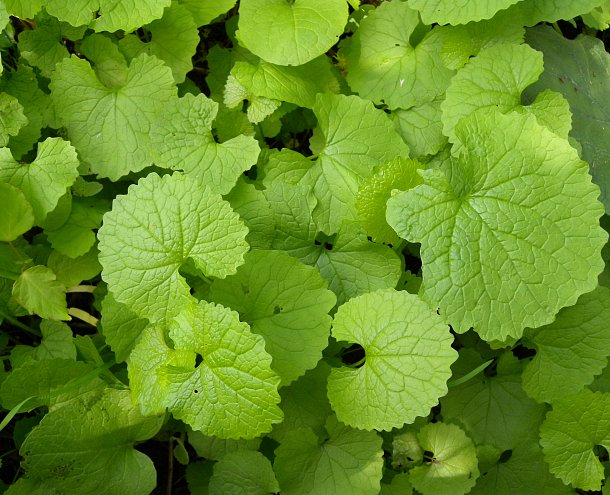|
|
|
Garlic Mustard
Gallic mustard is a biennial herb that can grow up to 1 meter tall. It has white flowers that bloom from April to June and produce numerous small, heart-shaped seeds that can remain viable in the soil for up to five years. The plant spreads through both seed dispersal and vegetative reproduction, with the latter being particularly effective in shaded areas. Gallic mustard is considered invasive because it can quickly outcompete and displace native vegetation, leading to a loss of biodiversity. It is particularly problematic in forests, where it can form dense monocultures that suppress native herbaceous plant species and limit habitat for wildlife. Additionally, Gallic mustard produces chemicals that inhibit the growth of other plants, further aiding its ability to dominate a site. Further, garlic mustard’s roots release chemicals that alter the important underground network of fungi that connect nutrients between native plants, inhibiting the growth of important species like trees. Efforts to control Gallic mustard typically involve a combination of manual removal and herbicide application. Preventing the spread of the plant by cleaning boots, clothing, and equipment that have come into contact with it is also important in minimizing its impact. Life cycle
Garlic mustard seeds are easily spread by people and animals. They can remain in the soil for up to 30 years and still be able to sprout. The plant can grow in a wide range of sunny and fully shaded habitats, including undisturbed forest, forest edges, riverbanks and roadsides. Garlic mustard does not provide a valuable food source for native wildlife. Is Garlic Mustard edible? Yes, garlic mustard (Alliaria Petiolata) is edible and has been used as a culinary herb for centuries. The young leaves, flowers, and seeds of the plant can all be consumed, and they have a strong garlic and mustard flavor. The leaves can be used in salads or cooked as a vegetable, while the flowers can be used as a garnish or added to soups and stews. However, it's important to note that garlic mustard is an invasive species that can harm native plant communities, so it's recommended to only consume it in moderation and to not spread its seeds when harvesting. Additionally, it's important to properly identify the plant before consuming it, as there are similar-looking plants that are toxic. References:
|


 Garlic mustard has two distinct life stages over its first two years. In the first year, it grows only a cluster of leaves shaped like a rosette, while a strong root system develops. Plants that survive the winter produce flowers and hundreds of seeds in their second year. Second-year plants grow up to 1.2 metres with high triangular, alternate, sharply toothed leaves and white flowers. Dense stands produce more than 60,000 seeds per square metre. Stands of garlic mustard can double in size every four years.
Garlic mustard has two distinct life stages over its first two years. In the first year, it grows only a cluster of leaves shaped like a rosette, while a strong root system develops. Plants that survive the winter produce flowers and hundreds of seeds in their second year. Second-year plants grow up to 1.2 metres with high triangular, alternate, sharply toothed leaves and white flowers. Dense stands produce more than 60,000 seeds per square metre. Stands of garlic mustard can double in size every four years.


